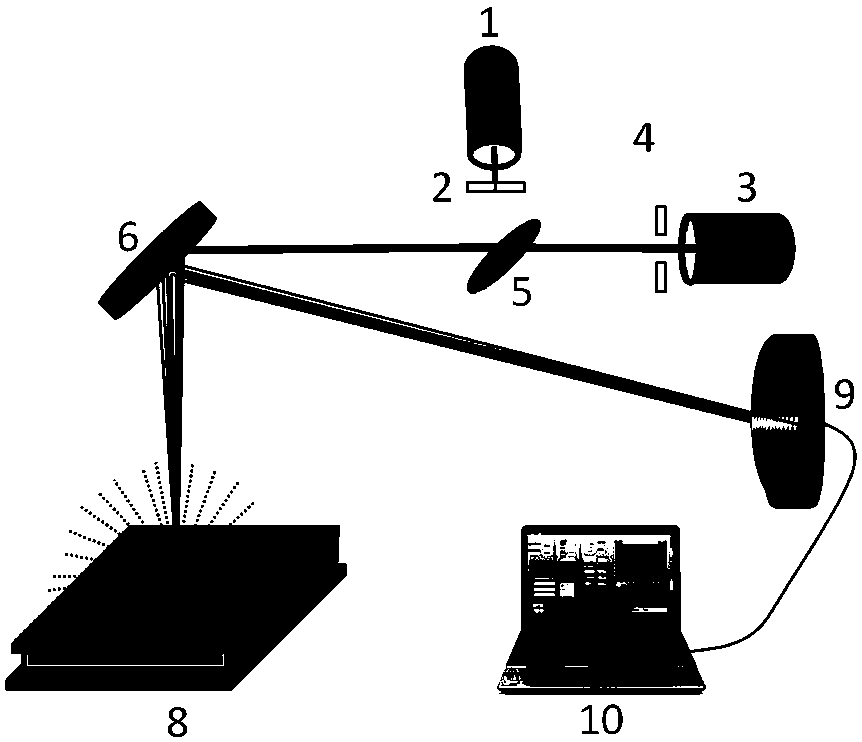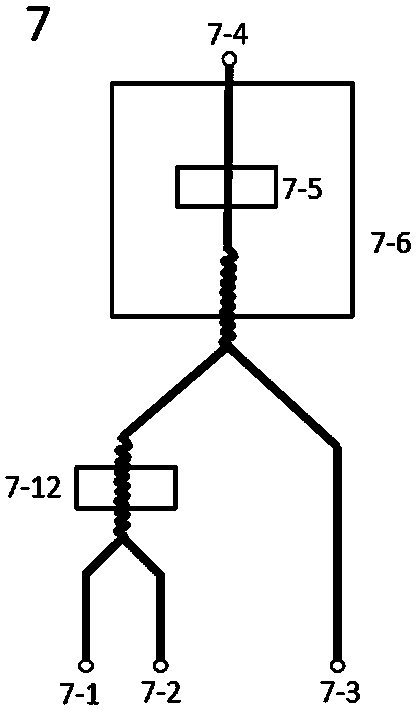Quantitative detection device and method for arsenic ions in water based on laser photo-thermal interference
A quantitative detection method and photothermal interference technology, which is applied in the measurement of color/spectral properties, the measurement of phase influence properties, and the preparation of samples for testing, etc. and other problems, to achieve the effect of taking a long time to detect, reducing the detection limit, and improving the accuracy of data processing.
- Summary
- Abstract
- Description
- Claims
- Application Information
AI Technical Summary
Problems solved by technology
Method used
Image
Examples
Embodiment
[0050] In the present embodiment, the component parameters of the device are selected as follows: the wavelength of the first laser 1 is 532 nm, the wavelength of the second laser 3 is 640 nm, the dichroic mirror 5 is a dichroic mirror that reflects green and transmits red, and the microchannel chip 7 is PDMS, the channel in the microchannel chip 7 is a square with a side length of 200 μm, and the photodetector 9 is a line array CCD.
[0051] Preparation of gold nanoparticles: The gold nanoparticles used in the experiment have a diameter of 10nm. Stir 1mL of 1% sodium citrate solution into 100mL of 0.01% chloroauric acid solution at room temperature, and add to the mixture after 1 minute. 1mL sodium borohydride solution, stirred continuously until the color of the solution turned into wine red; at room temperature, the prepared As(Ⅲ) aptamer solution was added to the prepared nano-gold solution to obtain a reaction solution, and the reaction solution, supernatant The pure wate...
PUM
| Property | Measurement | Unit |
|---|---|---|
| wavelength | aaaaa | aaaaa |
| laser intensity | aaaaa | aaaaa |
| diameter | aaaaa | aaaaa |
Abstract
Description
Claims
Application Information
 Login to View More
Login to View More - Generate Ideas
- Intellectual Property
- Life Sciences
- Materials
- Tech Scout
- Unparalleled Data Quality
- Higher Quality Content
- 60% Fewer Hallucinations
Browse by: Latest US Patents, China's latest patents, Technical Efficacy Thesaurus, Application Domain, Technology Topic, Popular Technical Reports.
© 2025 PatSnap. All rights reserved.Legal|Privacy policy|Modern Slavery Act Transparency Statement|Sitemap|About US| Contact US: help@patsnap.com



